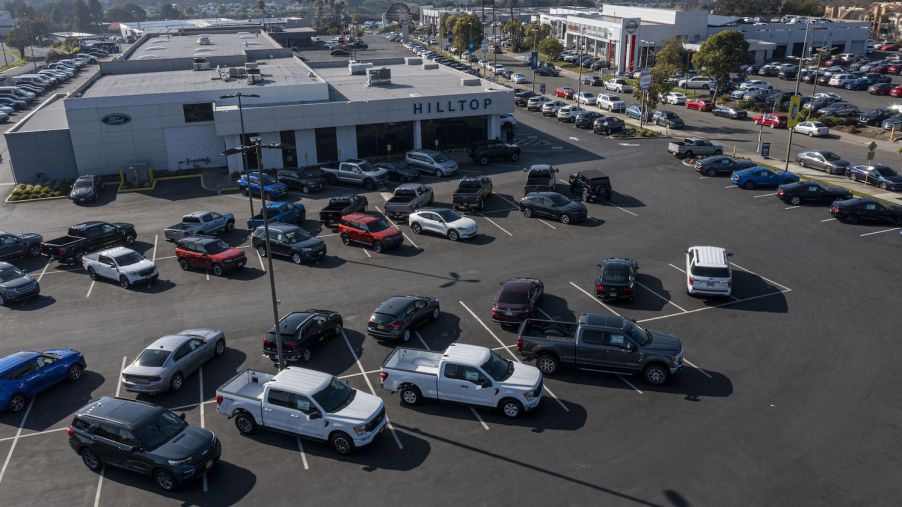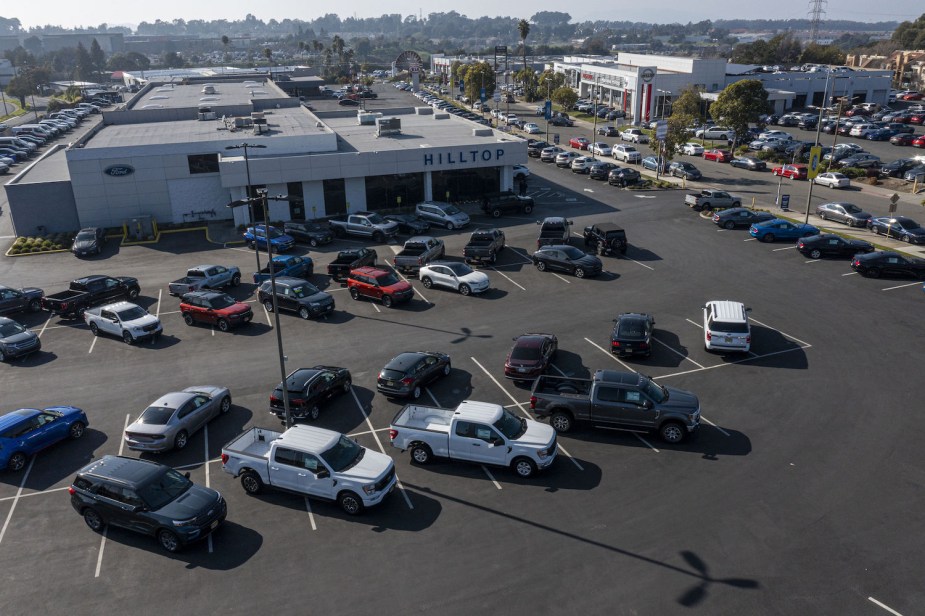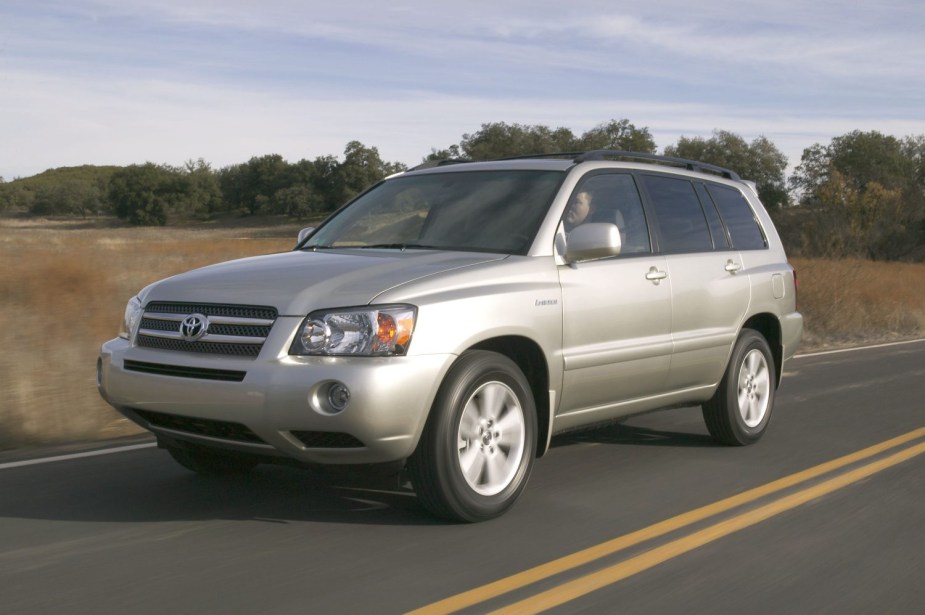
3 Online Dealership Listing Red Flags to Watch Out For
I was formerly the inventory manager for a dealership group, often listing hundreds of vehicles per month for two different dealers at a time. As a result, I’ve got a good idea of what works, what customers love to see, and how badly dealers need to avoid posting certain things online. Like any good car shopper, you should always look at inventories online before visiting a dealer. Here are three online dealership listing red flags you should watch out for.
1. RED FLAG: Missing photos

One vital thing I did while managing a used car inventory was take photos to post online. Many customers aren’t interested in a vehicle until they’ve seen it. Some won’t think anything of the lack of pictures. Then they’ll show up at a dealer and find a car that looks different from what they expected. However, photos can be missing for multiple reasons:
- The vehicle just entered the inventory.
- There’s something to hide.
In my time spent in dealerships, we practiced complete transparency. That means we never hid photos purposefully to deceive the customer. However, I have seen firsthand some dealer locations hide pictures. Usually, it’s to make the customer think the vehicle is of higher quality than it is. If zero photos are on the website, check for a listing date. A 1-7 day-old piece of inventory without images is perfectly normal. However, longer than a week or more, and something might be fishy.
Additionally, do your due diligence with other inventory selections. If you’re interested in a vehicle with 35 photos online and there’s another car with 40, what are the missing entries? It could be that one car has features the other doesn’t. However, in my experience, some dealers will skip posting a photo of the left side of the vehicle if there’s significant and noticeable damage, for instance.
2. RED FLAG: A missing or strange odometer reading
Almost every online dealership listing will have an odometer reading. Mileage is one of the most important things to customers when buying a used car. As a result, it’s usually front and center in the listing, and sometimes photographers will provide a photo of the actual odometer. However, some dealers will hide the actual distance previous owners have driven a vehicle.
On the one hand, if the odometer is missing from the listing, skip that car altogether. Like with photos, if it’s a new piece of inventory, it could easily just not have been updated yet. Alternatively, a week or older vehicle should have a reliable odometer reading. Be careful of absent mileage, as it could be higher than expected or so high the dealer doesn’t want buyers to know.
In addition, watch out for a strange odometer reading. For example, if a 10-year-old car has 20,000 miles on it, don’t just accept it as the truth. While it’s entirely possible for a vehicle to have extremely low mileage, it’s infrequent, and buyers should question it. According to Kelley Blue Book, the average driver travels between 10,000-15,000 miles annually.
Moreover, a vehicle with higher or lower mileage than that average could be a typo, deception, or a great deal. Regardless, always question it instead of accepting the odometer as fact.
3. RED FLAG: An underpriced vehicle has a problem

Lastly, a very low price is a red flag to watch out for with online dealership listings. As a former dealer employee, I’ve helped my fair share of friends and family find a new car. They’ll often send me a listing and say something like, “Wow, this looks like a great deal.” I then click the listing to find a car listed for $10,000 under other versions of the same vehicle. If it seems too good to be true, it almost always is.
Nearly every time that happens, I find something wrong with the car. Furthermore, the average buyer won’t notice certain things, but only that it’s very affordable. Check for unusually high mileage, a bunch of accidents on the CarFax report, or another easily hidden issue. Sometimes, a car is listed at a lower price than others because of something simple like its hideous color, which turns off most people.
The point is, if a vehicle listing looks really cheap compared to others, there’s something wrong with it. An incredible deal is almost completely unheard of in car sales. Always compare your vehicle with an identical one at a different location. Keep in mind location sometimes matters, and a dealer across the country could charge differently.
Online dealership listing red flags
In conclusion, online dealership listings have a few red flags to watch out for. If a car is missing photos, has a strange odometer reading, or is severely underpriced, don’t trust the listing. Moreover, a car that seems too good to be true probably is. Research thoroughly before entering a dealership or agreeing to purchase a new or used car.



